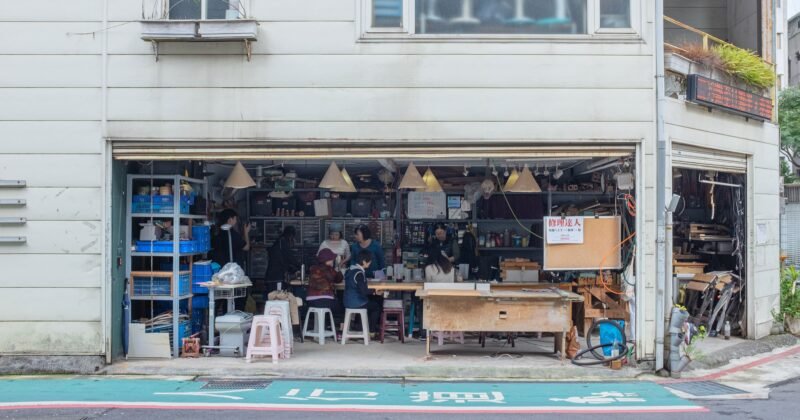Hamburg District Becomes A Playground For City-Makers
Last week we were invited to come to Hamburg to talk about the urban future at the international conference Building the City Anew, that was organized by HafenCity and the Internationale Bauausstellung (IBA).
HafenCity is Hamburg’s main harbor regeneration project and pretty similar to other European harbor redevelopment projects. IBA is an international building exhibition that is held in Germany every ten years. IBA is well known for their comprehensive and playful approach to huge strategic spatial projects. One of the greatest IBA projects is the strategic redevelopment of the German Ruhr Area twenty years ago, where the IBA exhibition showed to be a catalyzer for the amazing regeneration of the derelict industrial landscape of the heavily polluted Ruhr Area.

Now, almost twenty years later, IBA has set up shop in Wilhelmsburg, a huge urban island in the Elbe river in the south of Hamburg. Also here the starting point is a disadvantaged urban district that struggles with the legacy of its heavy industrial history. The main theme that IBA applies to Wilhelmsburg is the shift in the way Germany wants to manage energy — a shift from energy consumption to energy production. As always, IBA connects this large-scale ambition with innovation in building techniques and architecture, but also with culture, experience and just fun. These last elements in particular make this piece of urbanism stand out. A playground for city-makers will eventually turn into a playground for everyone.

The ‘Algenhaus’, a building that generates energy with microalgae.
Two extraordinary landmarks symbolize the energy-related renewal process — the Energy Bunker and the Georswerder Energy Hill. The Energy Bunker is a massive bunker that was built built during the Second World War and never been used after. Current plans want to preserve the monument and at use it to store and generate energy at the same time. The 30-meter high towers will be equipped with a biomass-combined heat and power plant, with a water tank and a solar power system to generate hot water and thermal heat for dwellings. This will supply some 3,000 households with heating and 1,000 households with electricity. A café located in the building at a height of 30 meters will offer a unique view across the Port of Hamburg. It’s often really hard to find new functions for empty buildings of this size and typology, and bringing in some creatives and arty types to occupy the building simply doesn’t always work. Therefore this project is really interesting as it takes re-using an old building one step further, and makes a connection with the local community at the same time.


This old Second World War bunker will be turned into an energy and culture power plant.
The Georgswerder Energy Hill is a contaminated landfill site that will be turned into a regenerative energy hill. The objective is to provide 4,000 households with electricity in the future, using only wind power and solar energy. Also the hill provides a great point to overview Hamburg’s industrial harbor. This way a big gap in the local urban fabric is turned into a park in which people experience the old industrial area and the new sustainable ambitions at the same time.

Bildungszentrum-Tor-zur-Welt.

Skateboard architecture: Haus-der-Jugend-Hamburg-Kirchdorf.
Altogether, IBA Hamburg contains some 100 projects that all shed a new light on sustainability in terms of energy, culture and social patterns in a modern metropolis. Pedestrian bridges connect various projects, activities for all kinds of audiences are organized and households are stimulated to generate energy with solar panels with a 500 euro funding for each household, provided by IBA. As I already said, adding a layer of experience to the program is an important element in IBA’s approach. It’s probably the best way to reach out the ambition to the people that will become users and owners of the transformed area. A great little example is a youth center close to last week’s conference venue, that has a transparent half-pipe on the first floor as part of the construction. Furthermore, the school building that set the stage of the conference had a slide that enables you to get from a playground on the roof to a playground on ground level. That’s IBA’s signature and damn, I like it!



